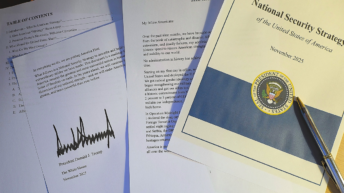
Pakistan’s use of terrorism as a tool of its foreign policy began in the 1980s and continues to this day. Despite a series of outrageous attacks, such as the assault on India’s parliament on 13 December 2001, the Akshardham Temple attack in Gandhinagar on 24 September 2002, and the Mumbai attacks of 26 November 2008, India’s response remained restrained, reactive, and defensive. Euphemistically called ‘Strategic Restraint,’ it served as a convenient rationale for avoiding decisive action against Pakistan-sponsored terrorism.
A significant shift occurred following the Uri terror attack on 18 September 2016, carried out by the Pakistan-based Jaish-e-Mohammed. For the first time, India introduced an element of deterrence in its counterterrorism response by conducting surgical strikes across the Line of Control (LoC). These strikes targeted multiple terrorist launch pads located just a few kilometres inside Pakistan-occupied Jammu and Kashmir. Pakistan was caught off guard, and its military attempted to downplay the operation.
After the Pulwama suicide bombing of a convoy of CRPF personnel in February 2019, which resulted in the deaths of 40 police personnel, the Indian Air Force conducted a precision airstrike on a terror camp in Balakote, located more than a hundred kilometres deep within Pakistan’s Khyber Pakhtunkhwa province. The messaging from India was clear: India would target terrorist bases in Pakistan, undeterred by Islamabad’s routine nuclear posturing.
The dastardly attack on tourists in Pahalgam on 22 April 2025 was, however, a grim reminder that India’s deterrence has yet to meaningfully influence the Pakistani military establishment. The cold-blooded murder of 26 people, singled out after conducting religious profiling, was an act designed to inflame communal tension within India. It was an unconscionable attack on the very soul of India.
In a resolute response, Prime Minister Modi vowed to avenge the women who had lost their husbands. Two weeks later, on the night of 6-7 May 2025, justice was served when the Indian military, in a blitzkrieg-type operation, destroyed nine terror camps in Pakistan, including the headquarters of LeT and Jaish-e-Mohammed (JeM) at Muridke and Bahawalpur, respectively. Fittingly, the operation was named ‘SINDOOR’, a symbolic tribute to the sanctity of marital bonds and the lives so brutally torn apart.
Operation SINDOOR marked a significant departure from previous actions, such as the 2016 surgical strikes and the 2019 Balakot airstrike, both in scale and geographic reach into Pakistan’s interior. A new normal was established. India affirmed its right to safeguard national security through decisive military action beyond its borders. Pakistan’s nuclear bluff was called; it would never be effective again.
Although the Pakistani planners were prepared for an Indian reaction following the Pahalgam terror attack, the scale and intensity of Operation SINDOOR took them by surprise. In the subsequent 48 hours, Pakistan launched numerous strikes against India’s military assets, conducting hundreds of drone and missile attacks spanning from Kashmir to Gujarat. The Indian air defence proved effective, and all Pakistani attempts to hit Indian targets failed. India’s Integrated Air Command and Control Systems (IACCS), which included legacy systems, electronic warfare systems, and advanced systems such as the Spyder Air Defence System, the Akash Missile System, the Barak-8/MR-SAM, and the S-400 Triumf, successfully intercepted and destroyed all incoming missiles and drones. The success rate was 100 per cent, a significant achievement for any military.
India’s counterstrikes also proved effective. The Chinese HQ-9 (Hong Qi-9 / 红旗-9) air defence system was destroyed, and 11 Pakistani air bases were rendered non-operational. Strikes were conducted near Rawalpindi on targets linked to Pakistan’s Strategic Plans Division. This served as strategic messaging, indicating to Pakistan that India could strike critical command structures. These attacks significantly degraded Pakistan’s air capabilities, compelling their army chief to pursue a cessation of hostilities. At Pakistan’s request, a hotline conversation between the DGMOs of the two countries occurred, resulting in an agreement on a ceasefire that remains in effect for now.
While Operation Sindoor has been temporarily paused, it will be resumed if Pakistan attempts further attacks on India. Addressing the nation on 12 May, Prime Minister Modi highlighted that Pakistan was the global centre of terrorism: “When Indian missiles and drones attacked those sites in Pakistan, it was not just the buildings of the terrorist organisations but their courage also shook. Terrorist sites like Bhawalpur and Muridke were the universities of global terrorism. All big terrorist attacks in the world, including 9/11 or big terrorist attacks in India, are somehow or the other connected to these terrorist sites…“ he said.
During his address, the Prime Minister outlined a new blueprint for the nation’s policy on dealing with terrorism. This is the Modi Doctrine, the essential elements of which are:
- Any terrorist attack on India sponsored by Pakistan would be regarded as an act of war and responded to accordingly.
- India will not tolerate nuclear blackmail from Pakistan. This signals the end of the nuclear blackmail paradigm and offers India greater flexibility to conduct operations on the conventional level.
- India will not differentiate between terrorists and their sponsors. Consequently, those who fund terrorism against India will also face repercussions. This sends a clear message to Pakistan and others who harbour terrorists and use them against India.
India also established clear red lines for dealing with Pakistan. These were:
- Talks and terrorism cannot coexist. This means there will be no discussions with Pakistan until it dismantles its terror network.
- Talks, if they occur, will be limited to two specific issues. First, cross-border terrorism originating from Pakistan; and second, discussions regarding Jammu and Kashmir will focus solely on the areas illegally occupied by Pakistan, notably Gilgit-Baltistan and Mirpur Muzzafarabad. These discussions will involve Pakistan’s return of these regions to India.
- Blood and water cannot flow together. This sends a clear message that India will keep the Indus Water Treaty in abeyance until Pakistan ceases to use terrorism as a tool of its foreign policy.
The shift in India’s messaging is stark. The new doctrine envisions a mix of kinetic and non-kinetic measures to compel Pakistan to abjure terrorism. The kinetic measures will target Pakistan’s military assets. The non-kinetic measures include isolating Pakistan on the world stage, controlling the flow of the Indus waters, and ceasing to engage with Pakistan in trade, sports, culture, or any other realm. In effect, this means that India will ostracise Pakistan.
How this unfolds remains to be seen, but it signifies a renewed determination within India’s political and military establishment that terrorism will be confronted with force. A new era dawns. A new doctrine is in place. A new India has emerged. And all this has been brought about by the success of Operation SINDOOR. Justice has been served.






We must now conclude the stalemate. It’s now or never. We have had just about enough of USA and other supporting countries trying indirectly or directly supporting Pakistan to fuel terrorism against India.
Well calibrated, concise, comprehensive and complete account of the genesis, impact, repercussions and the future course of Operation Sindoor. Modi doctrine is Well analysed. What is missing is where we missed, What we missed diplomatically, politically and militarily? Shouldn’t our approach to war on terror and the sponsor of terrorism be proactive and preventive? Why always reactive? Overall an insightful piece. Good for the students and researchers, particularly those preparing for competitive exams. I enjoyed as always reading Major Dhruv Katoch.